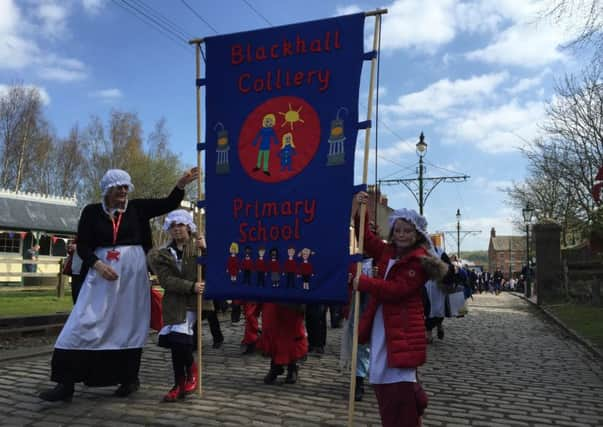Pit parade celebrates village's coal mining heritage


Children from Blackhall Colliery joined in a banner march as they recreated a parade held by pit communities in 1915.
The Old King Coal celebration recognised the region’s mining heritage, with the Beamish Museum gathering helping to show how the region’s people rallied round to support the troops during the conflict, while keeping industry at home going.
Advertisement
Hide AdAdvertisement
Hide AdThe original parade was held at Sherburn Hill, near Durham City, in September 1915, and featured a band of costumed cyclists including a pirate, with a bike decorated as a ship, and a retired pit pony pulling a tub.
The museum’s event also saw cyclists, musicians and banners join their own pit pony and the bike-riding pirate, while visitors also made mini-banners and helped to create a miners’ banner for another the parade.
Gemma Stevenson, community events officer, said: “This year’s Old King Coal gives us a chance to celebrate and commemorate the contribution that pit villages and communities in our region made to the First World War effort on the home front.
“Colliery villages sent many hundreds of men off to fight, while continuing to produce as much coal as possible for the war effort, to power the country, its shipping, industry and munitions production.”
Advertisement
Hide AdAdvertisement
Hide AdOld King Coal, which ran over four days, is the final part of the museum’s Great War Festival of Transport, which saw thousands of visitors attend a steam fair and its Horses at War event earlier this month.